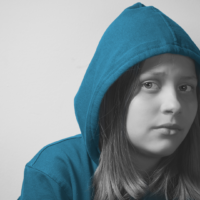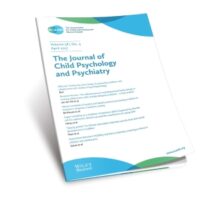self-harm
-

Professor Michael Kaess
Michael Kaess is Professor of Child and Adolescent Psychiatry and Psychotherapy at the University of Bern as well as the Director of the University Hospital of Child and Adolescent Psychiatry and Psychotherapy Bern in Switzerland. Professor Kaess is a Joint Editor of CAMH.
Read more -

Professor Kapil Sayal
Kapil Sayal is Professor of Child and Adolescent Psychiatry and Honorary Consultant Child and Adolescent Psychiatrist at the University of Nottingham. He is an Associate Editor of CAMH, responsible for the Technology Matters section.
Read more -

The TEENS randomised feasibility trial: Internet based intervention for non-suicidal self-injury in adolescents
In this Papers Podcast, senior researcher Dr. Britt Morthorst discusses her JCPP Advances paper ‘Internet based intervention (Emotion Regulation Individual Therapy for Adolescents) as add-on to treatment as usual versus treatment as usual for non-suicidal self-injury in adolescent outpatients: The TEENS randomised feasibility trial’.
Read more -

‘Suicide and self-harm; The Research, The Evidence, The Interventions’ Emanuel Miller Memorial International Online Conference
Delegates Only. A critical topic that all those working in the field of child and adolescent mental health should know about. Learn about the latest research, the different types of interventions, and the evidence base that supports this.
Read more -

Melatonin use and the risk of self-harm and unintentional injuries in youths with and without psychiatric disorders
Open Access paper from the JCPP – ‘This study investigated whether melatonin, which is the most common medication for sleep disturbances in youth in Sweden, is associated with a decreased risk of injury. Analyses were stratified by sex, injury type, psychiatric comorbidities and age at melatonin-treatment initiation’. Marica Leone (pic) et al.
Read more -

Research Review: Autonomic dysregulation and self-injurious thoughts and behaviours in children and young people: A systematic review and meta-analysis
Open Access paper from JCPP Advances – ‘Self-injurious thoughts and behaviours (SITBs) have been associated with dysfunction of the Autonomic Nervous System (ANS) in children and young people, suggesting that objective ANS measures may aid assessment of suicide risk, but a systematic synthesis of this literature is currently lacking.’ Alessio Bellato (pic) et al.
Read more -

Research Review: Viewing self-harm images on the internet and social media platforms: systematic review of the impact and associated psychological mechanisms
Open Access paper from the JCPP – ‘We reviewed studies of potential impacts and mechanisms associated with viewing self-harm-related images on the internet and social media.’ Karima Susi et al.
Read more -

Mortality risk following self-harm in young people: a population cohort study using the Northern Ireland Registry of Self-Harm
Open Access paper from the JCPP – ‘The aims of this study were to describe the characteristics of young people who present with self-harm; quantify the risk of suicide and other causes of death during follow up, and to identify factors associated with mortality risk’. Emma Ross (pic) et al.
Read more -

Practitioner Review: Common elements in treatments for youth suicide attempts and self-harm – a practitioner review based on review of treatment elements associated with intervention benefits
Paper from the JCPP – ‘This review highlights key treatment elements associated with efficacy that community practitioners can incorporate in their treatments for youth presenting with suicide/self-harm behaviors.’ Jocelyn I. Meza (pic) et al.
Read more -

Emotional Dysregulation, Disordered Eating, and Self-harm: Associations and Mediating Pathways
In this ‘Papers Podcast’, we are joined by Dr. Naomi Warne (pic) and Dr. Helen Bould to discuss their JCPP paper, ‘Emotional dysregulation in childhood and disordered eating and self-harm in adolescence: prospective associations and mediating pathways’.
Read more